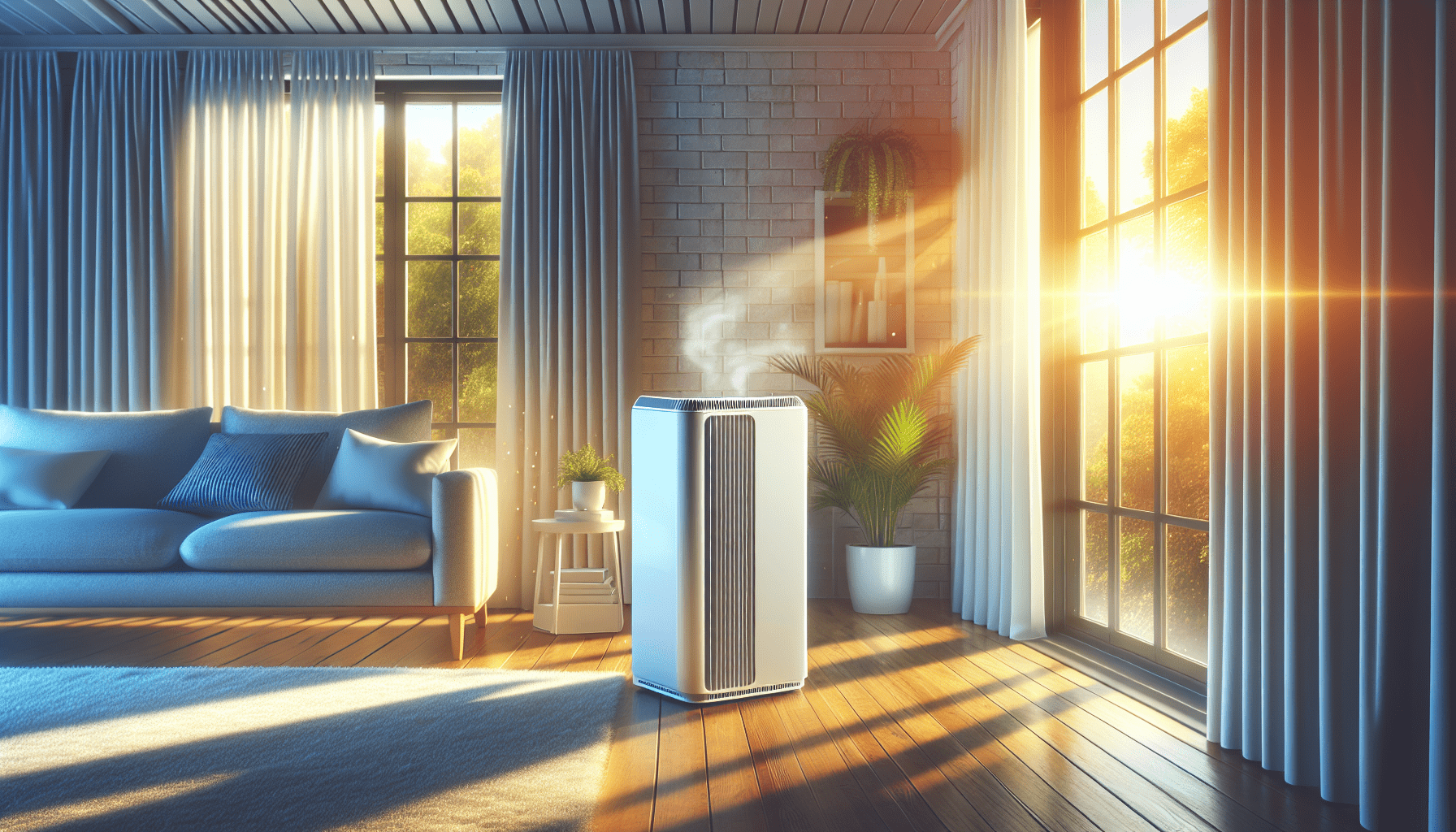You’ve invested in an air purifier, but now you’re wondering how to make the most of this powerful device. In this article, we will guide you through the simple steps to effectively use an air purifier in your home or office. From understanding the different modes and settings to ensuring proper placement, we’ve got you covered. Say goodbye to indoor pollutants and hello to a fresher and healthier living environment. So let’s get started on the journey towards cleaner air!
Choose the Right Size and Type of Air Purifier
When selecting an air purifier, it’s important to consider the size of the room you plan to use it in. Air purifiers come in various sizes, with each size designed to accommodate a specific square footage. You want to choose an air purifier that is powerful enough to effectively clean the air in your room.
In addition to room size, you should also determine the type of pollutants you want to remove. Are you mainly concerned about dust and pet dander, or are you looking to eliminate allergens like pollen and mold spores? Different air purifiers are designed to target specific types of pollutants, so it’s important to choose one that aligns with your specific needs.
To make an informed decision, it’s a good idea to research and compare different models. Look for air purifiers that have high-efficiency particulate air (HEPA) filters, as they are highly effective at removing airborne particles. Additionally, consider other features such as activated carbon filters for odor elimination or ultraviolet (UV) lights for killing germs and bacteria.
Once you have done your research, you can select the appropriate size and type of air purifier for your needs. Keep in mind that larger rooms may require multiple air purifiers to ensure optimal air quality.
Find the Optimal Placement
Now that you have chosen the right air purifier, it’s important to find the optimal placement within your room.
Start by identifying the source of pollution in your room. Is it near a heavily trafficked area, a pet’s sleeping space, or a smoking area? By understanding the source, you can strategically place the air purifier to better target the pollutants.
Proper air circulation is crucial for the effectiveness of an air purifier. Ensure that there is enough space for air to circulate freely around the unit. Avoid placing the purifier in a corner or near walls where airflow may be obstructed.
Pay attention to the intake and exhaust vents of the air purifier. Blocking these vents can hinder the purifier’s ability to draw in and expel air properly. Maintain a clear space around these vents to maximize the purifier’s performance.
It’s also essential to consider the height at which you place the air purifier. Placing it at a suitable height, such as at chest level, allows for better air intake and distribution throughout the room.
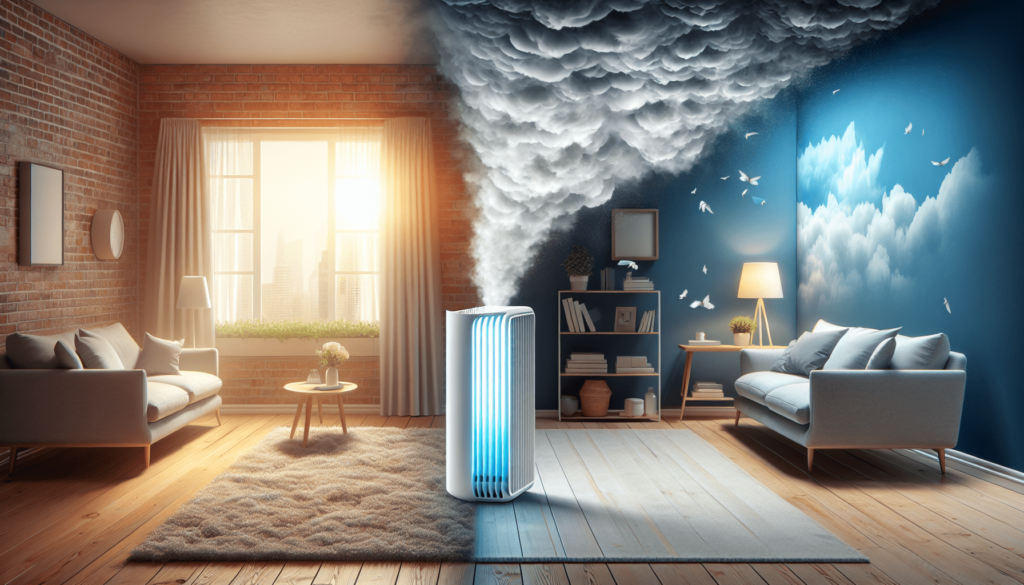
Read and Understand the User Manual
Before using your air purifier, take the time to read and understand the user manual. Familiarize yourself with the features and controls of the specific model you have purchased. Each air purifier may have unique settings and functions, so it’s important to know how to operate it properly.
The user manual will also provide valuable information about maintenance requirements. Different air purifiers may have varying maintenance needs, such as filter replacement or cleaning schedules. By understanding these requirements, you can ensure that your air purifier continues to perform optimally.
Follow the manufacturer’s instructions outlined in the user manual. They have designed the air purifier and know the best practices for its use and maintenance. Adhering to these instructions will help prolong the lifespan of your air purifier and maintain its effectiveness.
Plug in and Power On
Now that you have familiarized yourself with the features and controls of your air purifier, it’s time to plug it in and power it on. Follow these steps to ensure a smooth setup process.
First, locate a suitable power outlet near the area where you plan to place the air purifier. Ensure that the outlet can handle the power requirements of the purifier.
Before plugging in the air purifier, check the voltage requirements specified in the user manual. Using the wrong voltage can damage the unit or cause it to malfunction.
Once you have confirmed the voltage compatibility, insert the plug into the outlet. Make sure it is securely connected to provide uninterrupted power supply to the air purifier.
Finally, switch on the power button on the air purifier. You should hear the unit start and feel the air purifier quietly begin to purify the surrounding air.
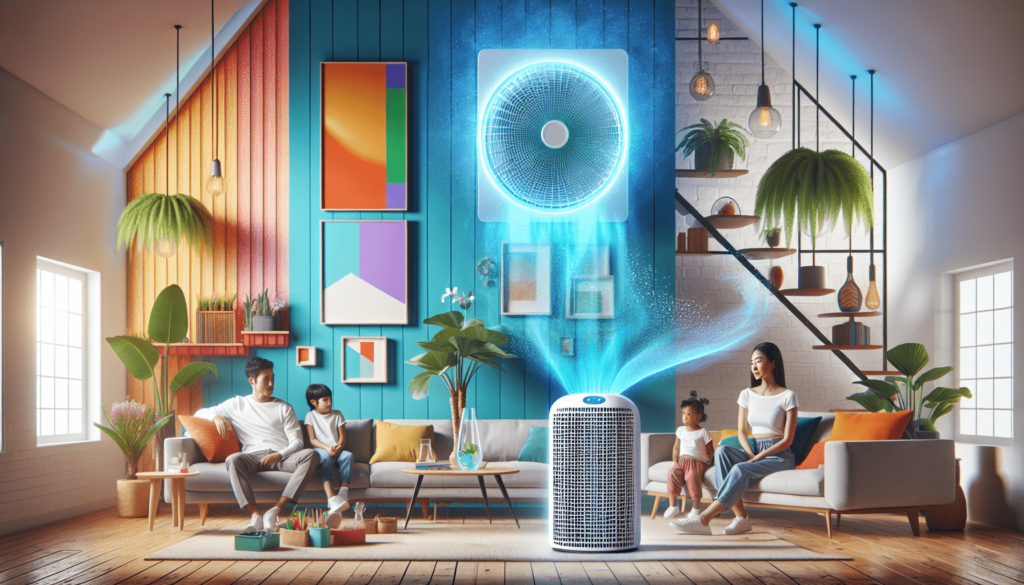 Benefits Of Using An Air Purifier
Benefits Of Using An Air Purifier
Set the Fan Speed and Timer
Most air purifiers offer adjustable fan speeds to accommodate different pollution levels and personal preferences. Here’s how you can set the fan speed on your air purifier.
Evaluate the level of pollutants in your room. If the air is severely contaminated or if you want quick purification, set the fan speed to a higher setting. This will increase the air circulation and filtration rate, effectively removing pollutants at a faster pace.
However, if noise reduction and energy conservation are a priority, choose a lower fan speed. This setting will produce less noise and consume less energy while still providing adequate air purification.
Some air purifiers also come with a timer function. You can use this feature to set the purifier to operate for a specific duration, such as a few hours or overnight. This allows you to conserve energy and have the air purifier run only when needed.
Experiment with different fan speeds and timer settings to find the optimal balance between purification efficiency and noise/energy considerations.
Understand the Filter Replacement Schedule
Your air purifier’s filter plays a vital role in purifying the air by capturing and trapping pollutants. It’s important to understand the filter replacement schedule to ensure that your air purifier continues to function effectively.
Start by identifying the type of filter used in your air purifier. The most common filter type is a HEPA filter, which is highly efficient at capturing airborne particles. HEPA filters have a certain lifespan, typically ranging from six months to a year, depending on the usage and the quality of the filter.
Refer to the user manual or manufacturer’s recommendations to determine the recommended filter lifespan for your specific model. It’s crucial to replace the filter within the recommended timeframe to maintain optimal air quality.
Many air purifiers have filter replacement indicators or notifications to alert you when it’s time for a new filter. Pay attention to these indicators and replace the filter promptly to ensure that your air purifier continues to provide clean air.
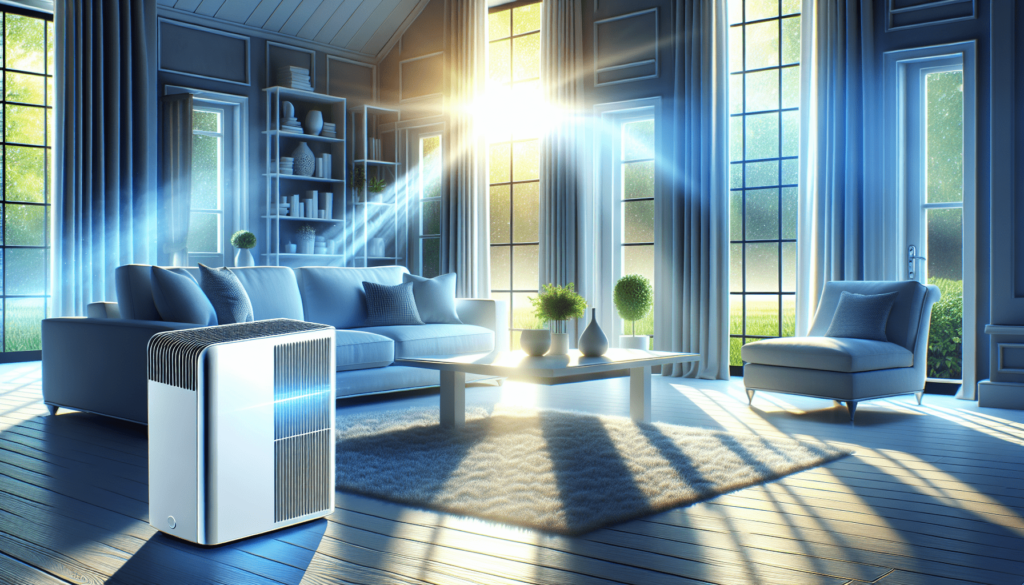
Monitor and Maintain the Air Purifier
Regular monitoring and maintenance are key to keeping your air purifier in top condition. By following a few simple steps, you can ensure that your purifier continues to function effectively.
Regularly clean the exterior surfaces of the air purifier using a soft, damp cloth. Dust and dirt can accumulate on the unit over time, affecting its performance. By keeping the exterior clean, you help maintain proper airflow and prevent any potential blockages.
Some air purifiers also have a pre-filter, which captures larger particles before they reach the main filter. Monitor this pre-filter and clean or replace it as necessary. A clogged pre-filter can reduce the air purifier’s efficiency and strain the main filter.
Pay attention to any air quality indicators or sensors on your air purifier. These features can provide valuable insights into the air quality in your room. Monitor the readings and take action if the air quality is not up to your desired standards.
Finally, make sure to follow the maintenance schedule outlined in the user manual. The manufacturer’s recommendations will guide you on how often to clean the filters, replace the filters, or perform any additional maintenance tasks. By staying on top of these tasks, you can ensure that your air purifier operates at its best.
Avoid Obstructions and Interference
To maximize the effectiveness of your air purifier, it’s important to avoid obstructions and interference that may hinder its performance. Follow these guidelines to ensure optimal air purification.
First, keep the air purifier away from obstacles such as furniture, curtains, or other items that could obstruct airflow. The unit needs ample space to draw in air and circulate it effectively.
Maintain a clear space around the air purifier, ideally at least a few feet in all directions. This allows for unrestricted airflow and ensures that the purifier can capture pollutants from a wide area.
Avoid placing the air purifier near electronic devices that emit electromagnetic interference. The interference can disrupt the air purifier’s operation and affect its performance.
By avoiding obstructions and interference, you can optimize the air purifier’s ability to clean the air in your room.
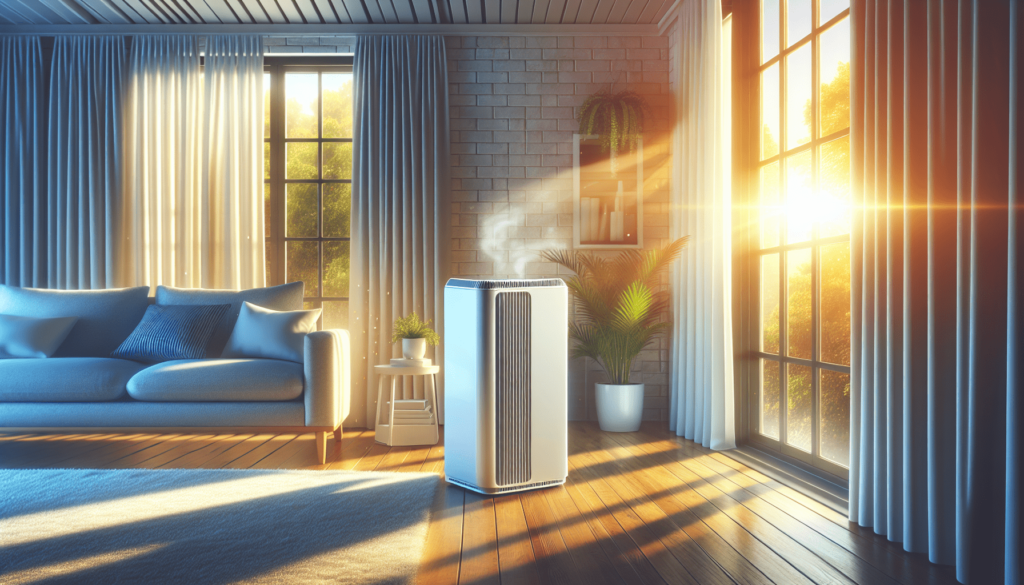
Use in Conjunction with Other Measures
While an air purifier is an excellent tool for improving indoor air quality, it’s important to use it in conjunction with other measures for comprehensive purification. Consider implementing the following practices alongside your air purifier.
Keep your room clean and free from dust and allergens. Regularly dust surfaces, vacuum carpets, and sweep floors to minimize the buildup of contaminants.
Ventilate the area by opening windows or using exhaust fans. This helps introduce fresh air into the room and removes stagnating air, along with any pollutants it may contain.
Control the source of pollutants, such as smoke or cooking odors. Properly ventilate cooking areas and designate smoking areas away from the main living spaces.
Consider using air purifiers in multiple rooms, especially if you spend a significant amount of time in different areas of your home. This ensures that each room benefits from effective air purification.
By combining these measures with the use of an air purifier, you can create a cleaner and healthier indoor environment.
Regularly Monitor and Enjoy the Benefits
Once you have set up your air purifier and implemented additional measures for better air quality, it’s important to regularly monitor the improvements and enjoy the benefits.
Observe the air quality in your room over time. You may notice a decrease in dust, allergens, or other pollutants as the air purifier continues to do its job.
Take note of any changes in your allergies or respiratory symptoms. If you find that your symptoms are reduced or alleviated, it’s a good sign that your air purifier is effectively capturing and removing allergens from the air.
Appreciate the benefits of clean and fresh air in your surroundings. Breathing in cleaner air can improve your overall well-being, enhance sleep quality, and reduce the risk of respiratory issues.
By regularly monitoring the air quality and enjoying the benefits, you can ensure that your air purifier continues to contribute to a healthier living environment.
Using an air purifier is a simple yet effective way to improve the air quality in your home or workspace. By carefully choosing the right size and type of purifier, understanding its features and controls, and implementing proper maintenance and placement practices, you can enjoy cleaner and fresher air in your surroundings. Remember to monitor and appreciate the improvements, and continue to take steps to keep your indoor air as healthy as possible.

